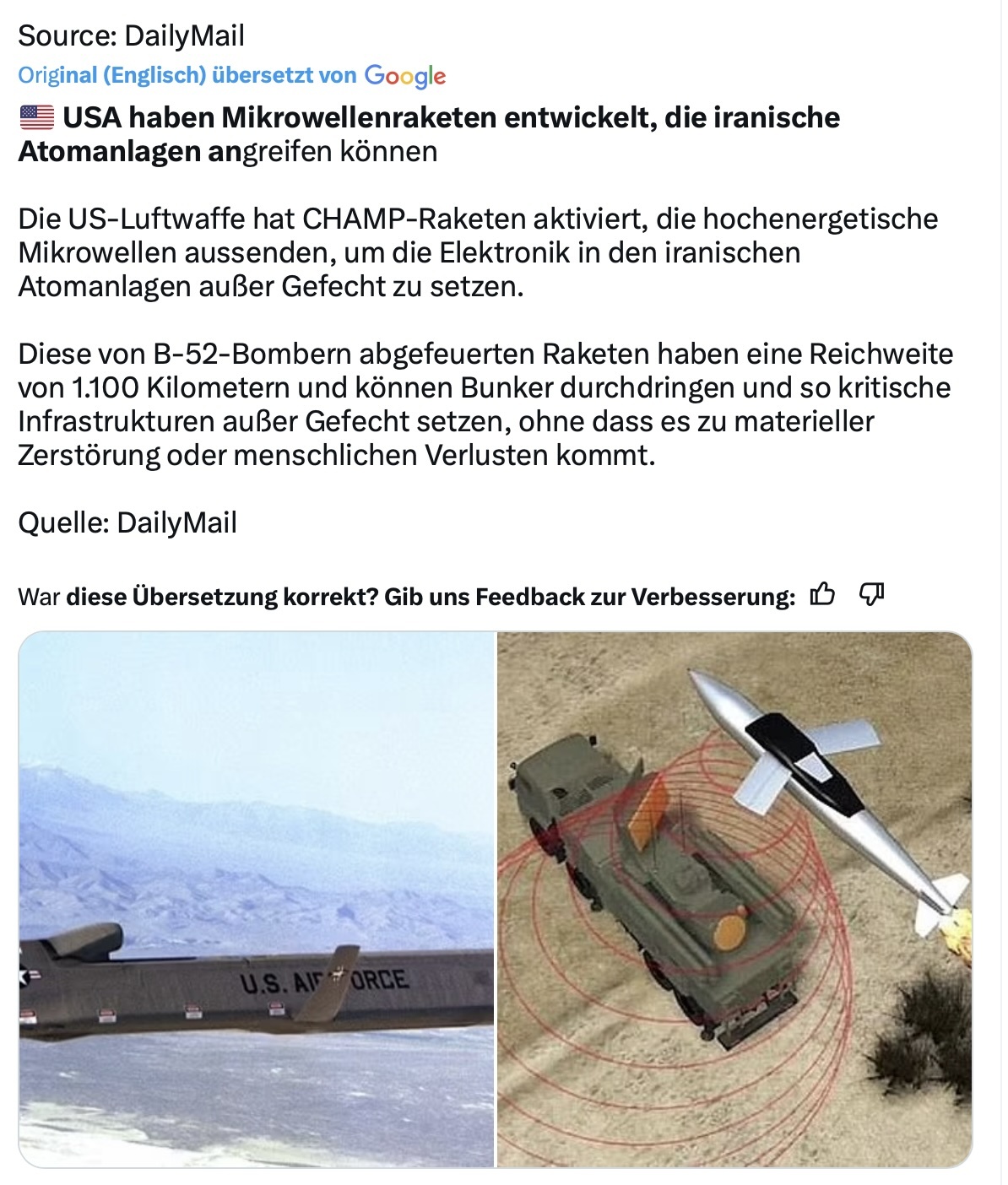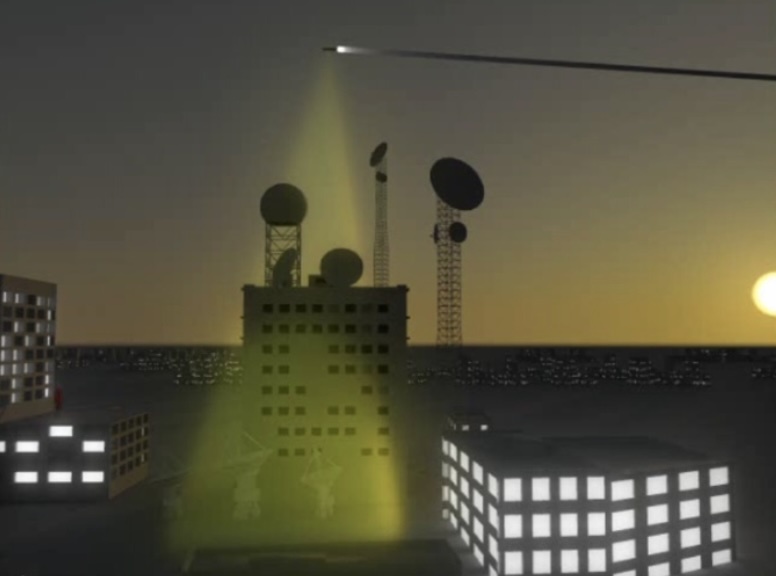28.05.2024

CHAMP, USAF

Quelle: X Twitter
+++
AFRL Directed Energy Directorate
High Power Electromagnetics

CHAMP System
The Counter-electronics High
Power Microwave Advanced
Missile Project (CHAMP) is an
unmanned system capable of
flying into a contested area and
disabling an adversary’s electronic
systems. It employs a high power
radio frequency technology, which
was developed over the past two
decades in the Air Force Research
Laboratory and tested through a
Joint Capability Technology
Demonstration(JCTD) program.
CHAMP offers a proven capability
that allows the Air Force to defeat
electronic systems in an enemy
structure without employing kinetic
weapons like bullets or explosives.
As such, CHAMP completely avoids
damage to infrastructure and
danger to life.
The CHAMP system is highly
adaptable and can be deployed
from a variety of platforms,
depending on mission needs.
Possible avenues for a CHAMP acquisition
strategy are being considered, though no
clear path has been provided. In the
meantime, AFRL is continuing its efforts to
hone the CHAMP capability, working
towards improving the size, weight, and
power. Though there are no planned
demos of HPM systems in the near future,
AFRL is deeply engaged in advancing the
technology to enable the next generation
of HPM-based weapon systems.
Active Denial System (ADS)
In addition to CHAMP, AFRL matured
another non-lethal HPM technology in the
last decade—the Active Denial System.
As proven during its Advanced Technology
Demonstration program, ADS is a long-
range, speed-of-light beam that causes
intense pain to targeted individuals without
resulting in any temporary or permanent
physical damage. AFRL has transitioned this
technology to the Joint Non-Lethal
Weapons Directorate and showcased it to
a host of potential customers, including
Homeland Security.
Quelle: AFRL
